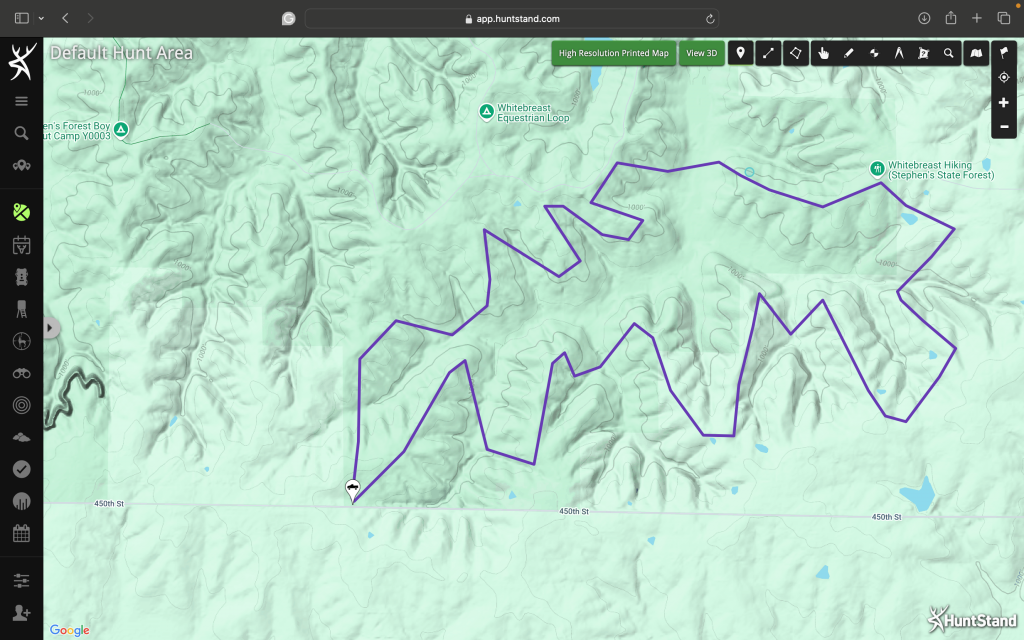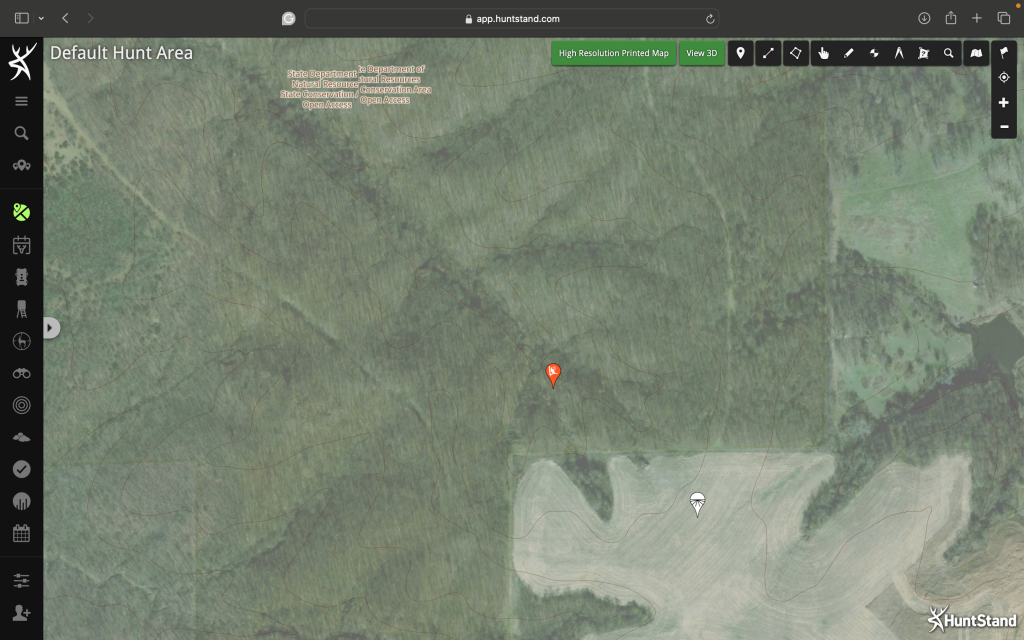Public Land Hotspots
Success on public land isn’t always about which parcel you’re on but more about how you hunt it.
The gobbles boomed like thunder through the Wisconsin hardwoods. I was less than 60 yards from the roosted bird as I pushed my truck door closed and swatted away clouds of mosquitoes. I expected to get on a gobbler that morning, but I had no clue he’d be roosted almost above the parking area. I tip-toed about 30 yards from the road and sat down.
I made a couple of tree yelps and then shut up. I let the gobbler’s curiosity build, and then I shook my hat to simulate a hen flying down. Soon, the gobbler flew down next to my truck and was strutting on the road. I knew I needed him to come looking, so I carefully tossed some leaves like turkeys do when looking for food. He came in on a string. When I knew the turkey was well beyond the minimal distance from the road, my 12-gauge roared, and I walked over and collected the limb-hanger.
I had hunted that same public parcel the previous day and had walked a long way only to hear distant gobbles. Determined, I scoured my mapping app and identified a better access point. I believed no other hunter would use it. My hunch was correct, and it produced.
If the title of this article made you think I would outline that piece of public land and others where I’ve had success, think again. This article is meant to provide you with a practical plan for dissecting whatever public parcel you’re on in a way that’s likely to put you on a gobbler. Follow along.
Public Land/Private Land Fringes
Tons of public parcels featuring timber border private agricultural land or at least rolling pasture ground. Birds often roost on the public and head to the private to feed, or they roost and feed during the morning on the private and then seek shelter from the midday heat in the denser public forest.
The fringes of public and private lands are almost always worth a look, especially when they’re far from the nearest parking area or so stupidly close to the road that even lazy hunters overlook the low-hanging fruit. If you have a mapping app — I suggest HuntStand Pro — engage the property info or public lands overlay to see the public parcel’s boundaries. Browse the perimeter with the hybrid base map to identify agriculture or at least open pastures where turkeys will likely feed. Pay attention to the timber on the public land where it borders the ag or pasture. That’s likely a great spot, and if several such spots exist, keep your options open, and hit them one at a time until you locate a gobbler.
Hunting fringes has safety and ethical components. First, someone could be hunting on the private land, which could put you in their line of fire. If you sense someone is there or hear someone calling, stay back 200 yards, or leave and go somewhere else. Likewise, if you’re working a bird, it could be unsafe to shoot toward the private land unless you’re 200 yards or more from the border. Stray BBs could ruin someone’s day.
Another thing, regardless of who else is hunting, is that you should never sit right on the border. Always give yourself a margin for error of at least 40 yards, and then make darn sure that the bird has crossed onto public territory before pulling the trigger. Other hunters might have different views on this, but no one owns the birds, whether they’re on private or public land. The moment they cross onto public land, they become fair game to any legal hunter. But you don’t want to make enemies or incite legal drama by crowding the lot line. Respect the boundaries.
The Heart of the Parcel
On large public parcels where you can get two miles away from roads, the heart of the property can be a real hotspot. Many hunters stop a half-mile from the road or closer, and when you push deeper than that, you can find birds that are less pressured.

This past spring, I hunted some public land in Wisconsin and rode my e-bike on an ATV trail for a few miles before locating a receptive gobbler. Most folks don’t use ATVs for access while turkey hunting because of the commotion, but my quiet e-bike got me way beyond the easy access and into the heart of the property. It took some coaxing, but I called that gobbler within 12-gauge range, and he had the longest spurs of any turkey I’ve ever taken.
If e-bike access isn’t allowed, all the better. You just have to be willing to hike really deep — way beyond what most other hunters are willing to. It can be a slog, and it might take several such hikes on several parcels to strike a bird, but the heart of a parcel or even the opposite end of the parcel is often the best, especially given the right habitat.
Roosting Ridges
Turkeys love to roost on ridges, and in windy conditions, they typically roost below the ridge on a leeward slope. Big, commanding ridges are hotspots, and finding them on an app is easy. The terrain base map or the quad topo base map will show you ridges, and then if you switch to the hybrid map, you should be able to determine if there is enough roosting timber.
Drop map markers on all ridges that might potentially serve as roosting areas. If you have the option to scout before hunting, visit the ridges and search for concentrated droppings beneath large trees, but also look for scratch marks in the leaves. If you cannot scout before hunting, map out all of the ridges on the app, and then get there early to listen for roosted gobblers at dawn. Work each ridge throughout the morning until you’re out of time or locate a gobbler.

Along the Road
As my opener suggests, hunting along a roadway — know the minimum distance you must be from the roadway to legally fire your bow, crossbow or shotgun — can be overlooked and productive. Some of the best hunting occurs when there is no parking area nearby. Another equally advantageous scenario is when a walking trail leads straight from the parking area into the parcel. It’s a given that most hunters will take that trail, and the ground perpendicular to the parking area might be overlooked entirely. I’ve killed several public-land turkeys in such settings.
Find Those Hotspots
If you were hoping this article would outline specific public parcels where the turkey hunting is dynamite, I probably let you down. However, I’m a firm believer that success isn’t always a product of which parcel you’re on but how you pick it apart and hunt it. If you attack public-land turkey hunting from that angle, I’d be surprised if you don’t consistently find more turkeys.
